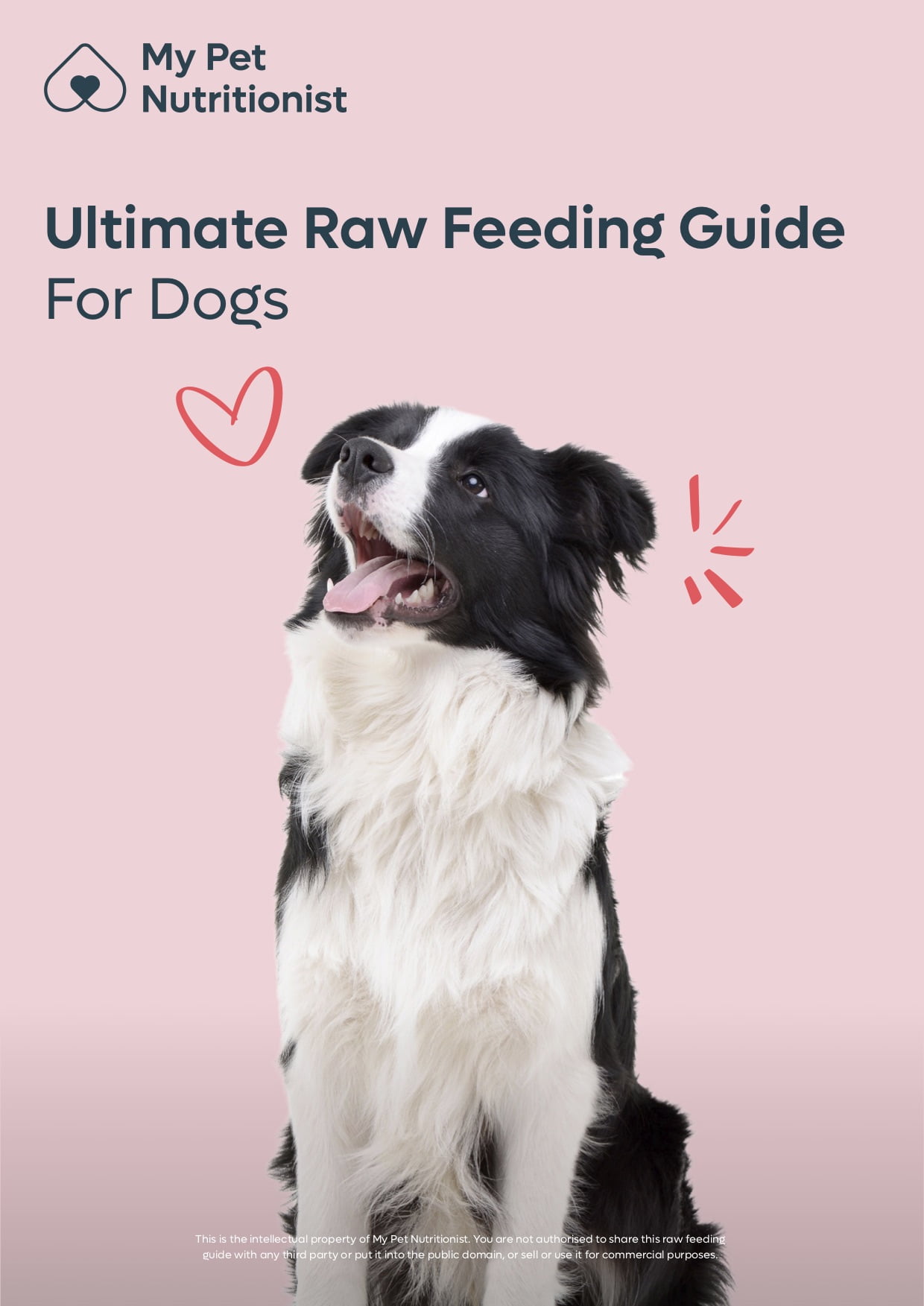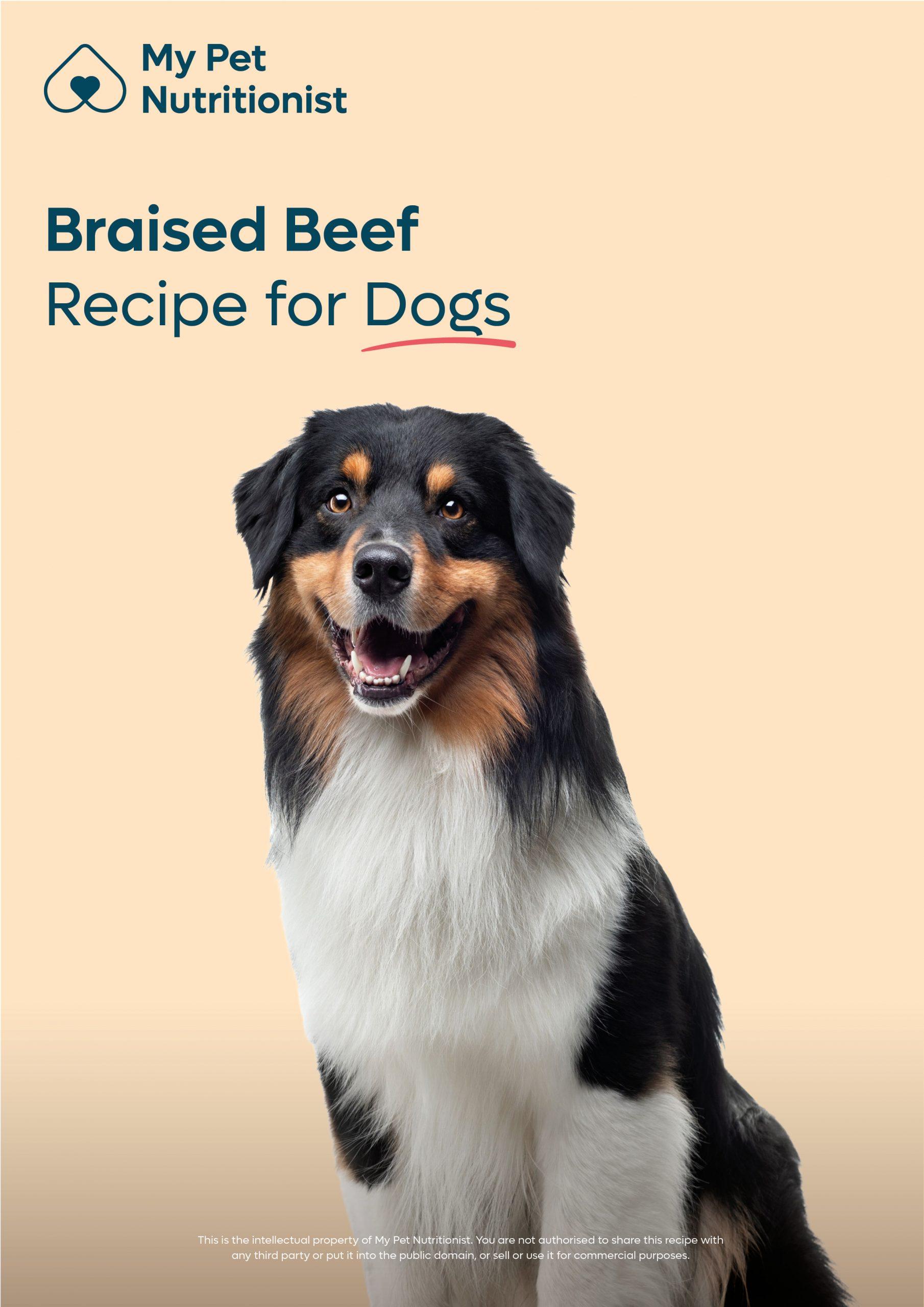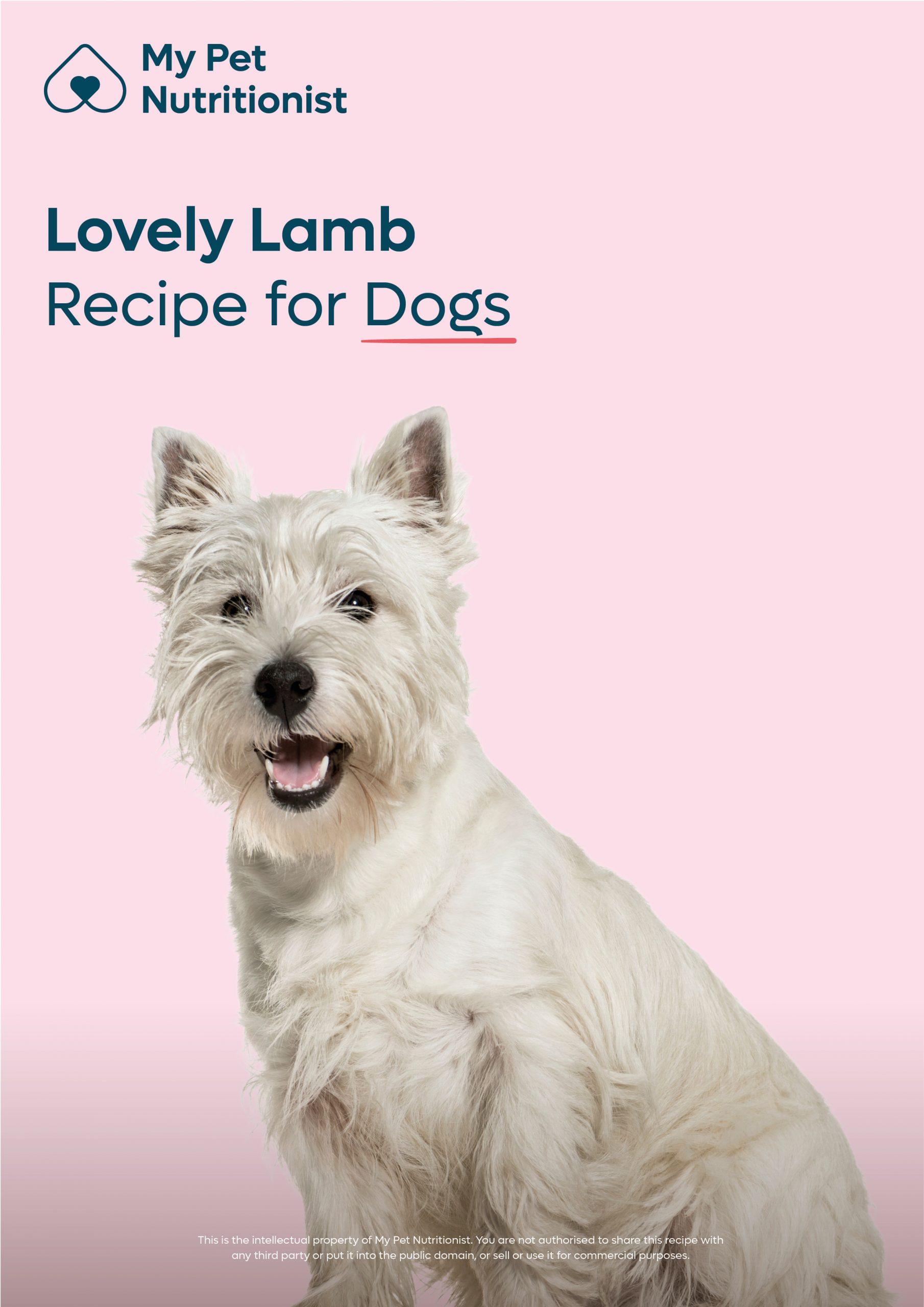
Do Dogs Need Carbohydrates?
- August 31, 2020
- 10 min read
Dogs are carnivores and have very little nutritional requirement for dietary carbohydrates (starch) to thrive. They get everything they require from protein and fat. Unfortunately, carbohydrates are one of the the main ingredients in commercial pet food, not displayed on the packaging. Our dog’s ancestors didn’t eat dry kibble like they do today.
A dog’s digestive system is geared up to digest exactly what he evolved it eat – wild prey. Unlike us, dogs cannot produce the enzyme amylase in their saliva that helps break down starch. However, they do produce a small amount from the pancreas which means they are capable of digesting ‘small’ amounts like grasses, seeds and plant matter – all of which would have been found in the wild prey’s gut they would have hunted down and eaten. Due to the lack of amylase, digesting processed food; laden with carbohydrates puts huge pressure on the digestive system that can lead to many health issues like obesity, diabetes and cancer so it only makes sense to feed a fresh or species appropriate diet that mimics what they evolved to eat naturally.
As discovered by the NRC (Nutritional Research Council), it has been proven that dog’s do not require a high amount of carbohydrates, un yet they allow 30-60% of pet and veterinary approved foods to contain carbohydrates. National Research Council of the National Academy of Sciences, “Nutrient Requirements of Dogs and Cats”, 2006 Edition, National Academies Press, Washington, DC.
Not all carbohydrates are bad for our dogs, so how do we know what to look for and understand the good from the bad and how much we should be offering them and why?[
Carbohydrates come in three categories –sugar, starch and fibre.
Simple carbohydrates are the simplest of the two carbohydrate forms. They are essentially ‘sugars’ that are found in many cheap highly refined grains, white rice and can also be found in fruit (fructose) dairy products (lactose). Simple carbohydrates can be further broken down to monosaccharides and disaccharides. Quickly and easily metabolised, these simple carbohydrates better known as (sucrose and glucose) which are found in refined products like sugar beets all of which area source for short-term energy.
Complex carbohydrates are made up of larger, more complex molecules.These are called polysaccharides. They are digested more slowly; these are subcategorised as ‘starches and fibres’. Both soluble and insoluble fibres are found only in unprocessed whole foods (plant food) such as vegetables. Complex carbohydrates provide slow-release energy. They aid digestion, help maintain the immune and nervous systems and help regulate the metabolism.
Let’s talk phytonutrients! We love them here at MPN. Phytonutrients are not essential to keep the dog alive like proteins, fats, vitamins and minerals do, but they have shown to help with important health benefits including potent antioxidant properties (antioxidants that help protect cells from oxidative damage caused by free radicals/disease) and may have anti-cancer activities that send healthy signals to cells.
Phytonutrients also encourage enzyme production and add fibre to the diet. The most common are carotenoids (which include alpha-carotene and beta-carotene) and flavonoids. Carotenoids are found in fruit and vegetables that are red, orange and yellow in colour. Examples: bell peppers, raspberries, carrots, sweet potato, cauliflower and apples.
Flavonoids are found in the darker coloured fruit and vegetables that have blue, purple and red pigments. Examples: blueberries, blackberries and some green vegetables such as kale.
Phytoestrogens however, are some what different and important to understand why. They are found in foods like soy beans, chick peas, alfalfa and legumes. They come under the names of coumestan, isoflavones and lignans. These should be consumed in moderation as they can disrupt endocrine function, such as the thyroid gland which can lead to Hypothyroidism similar effects to feeding too many cruciferous vegetables, these should also be fed in moderation but they do have some benefits in fighting cancer.
Phytoestrogens are chemicals found in plants that act like hormone oestrogen and can either mimic or block oestrogenic effect (Allred et al., 2001). On a positive note, lignans can have a helpful effect. Flax Hull Lignans have shown success in Cushing’s disease, which is a disease caused by having too much cortisol in the body.
According to a study on Scottish Terriers that was carried out in 2005, suggests that consuming certain vegetables three times per week might prevent or slow down the development of transitional cell carcinoma (TCC) a bladder cancer that this breed is predisposed to.
Study found here
Despite the fears regarding oxalates – which are naturally occurring plant substances. If fed in large amounts (and in some cases with dogs who have leaky gut) it may be absorbed from the gut into the blood, urine and tissue. When excreted by the urine calcium-oxalates bind together and can lead to kidney stones (which is rare in dogs but crystals are not unheard of). These oxalates are found in green leafy vegetables.
If these phytonutrients are fed in small amounts there should not be too much of concern. The highest levels of oxalates are found in spinach, beet greens and swiss chard, feeding small amounts is perfectly fine or opt for lower oxalates in vegetables like watercress and cabbage. Anything that isn’t species appropriate should always be fed in moderation.
Glycemic index is a measurement of how certain foods increase blood sugar once eaten. Many high glycemic carbohydrates are ‘refined’ grains that have been milled resulting in loss of most nutritious contents; dietary fibre, iron and the B vitamins. High glycemic carbohydrates should be avoided in dogs, such as corn, wheat, white rice, potatoes and peas. You will find these in the majority of commercially prepared dog food, dogs being fed these types of foods, may do well for a short term but will only be a matter of time when health issues start arising.
For example, dogs who suffer with sensitivities or allergies, may do better eating food that have low glycemic index (GI) such as vegetables, fruits and grains like: leafy greens, cucumber, cauliflower, courgettes, pears, quinoa and buckwheat, and avoid high GI. Here at MPN we always recommend feeding fresh real food, either lightly cooked or raw that consists of a broad range of nutrients. Variety is key to achieve this as no single food contains all the requirements our dog needs to thrive.
What’s the deal with Grain Free?
Grain free diets have become popular over the past few years and many have changed to grain free food thinking they are feeding a better choice. Many care givers are realising that grains are not suitable or perhaps their vet has recommended one due to the dog showing some kind of sensitivity or allergy to gluten. But are these foods actually any better?
According to the U.S Food and Drug Administration. In July 2018 they had begun an investigation into potential link between certain diets and canine dilated cardiomyopathy (DCM) and dogs eating certain ‘grain free’ pet foods after reviewing more than 500 cases of DCM. These foods contain a high proportion of peas, lentils, other legume seeds (pulses), and/or potatoes in various forms as main ingredients (listed within the first 10 ingredient list, before vitamin and minerals).
The issue we have is that taurine isn’t listed as essential in FEDIAF guidelines. Dogs can make their own protein from other amino acids that are listed as essential. Even if these foods are tested for the correct level, legumes or also known as lectins appear to be blocking absorption of the amino acid causing the disease. These lectins are carbohydrate- binding proteins (why they are frequently used in commercial kibble, to help stick and help form the little shapes or balls) they contain inflammatory plant proteins, wheat is an example.
They cause havoc in the digestive tract and can cause intestinal permeability, or leaky gut. Lectins are present in most plant foods but especially high in the nightshade vegetables such as, potatoes, peppers and tomatoes and legumes such as beans, peas, lentils, soybeans and peanuts.
Findings here
Here we will show you how to calculate the carbohydrate content in a bag of dried dog food. Rarely, if ever will you find carbohydrates listed on manufactured dog food. The way to know for sure is to study pet food labels and know what to look for. Once you understand how to do this you will be shocked with the amount that is hidden in the food.
On average the majority of dried food on the market today contain anywhere between 46% and 74% carbohydrates, staggering isn’t it! To find out the typical analysis (details which you can find on the packaging that list information about levels of certain nutrients in your dog’s food). According to British law, all complete dog foods have to display the percentages.
All dog foods consist of protein, fat, ash and moisture. The total of these components equals 100% of the overall weight of the dry food. If ash content is not listed, allow for on average of 7%. Moisture is generally between 5-9%. Fibre is included as part of the carbohydrates.
Typical Analysis
Protein 23%
Fat 8%
Moisture 8%
Ash 7.5%
Add all the above together 23+8+8+7.5 = 46.5 and deduct from 100 = 53.5% carbohydrates
Obesity is on the rise in the UK while 77%of vets believe the obesity issues has got worse since 2009 (Pet Food Manufactures’ Association(PFMA) 2014)
Grains generally get talked about in a negative way due to the highly processed dry dog foods that contain a considerably large amount of them. On the other hand, freshly cooked grains can be quite a useful addition in raw feeding or cooked diets. They can be added for dogs who need to gain weight or struggle to keep weight on, and for the likes of active working dogs. Freshly cooked oats (preferably organic) could be an option for those who need to bulk out food and keep costs down.
Oats are also useful for dogs in late stage kidney disease, they help to reduce the protein content while increasing calories. Soaking the grains overnight will help aid digestion and remove phytic acid which acts as anti-nutrient. It reduces the absorption of valuable vitamins and minerals such as niacin, calcium, iron, magnesium, and zinc.
Only feed small amounts around 6th of a raw diet and a quarter of a cooked diet if the dog can tolerate them! Many dogs are intolerant to gluten (grains that contain gluten are oats, barley, wheat and rye) so feeding ancient grains (also called pseudo-grains) would be abetter alternative as these are ‘seeds’ rather than grains.
These include the likes of mullet, buckwheat and amaranth that are all high in protein and fibre. We would like to add how amazing Amaranth is here, if you haven’t heard of it look it up! It is also gluten.
– grain free, protein rich that have a well– balanced amino acid composition. It has good functional properties, high bioavailability that provides plenty of ‘fibre’ and helps fight inflammation. These type of ‘functional foods’ are more nutritious; gluten free and less likely to cause sensitives. Chia seeds are also full of important nutrients.They are rich in antioxidants and an excellent source of omega 3 fatty acids. They provide ‘fibre’, iron, and calcium too, you can see why they are claimed to be a superfood!
Be mindful – anything that is not fresh, feed in moderation. To find out more and how functional foods can work for your dog and how to avoid unnecessary carbohydrates in their diet, check out our consultation services.
Consultations
Thanks for reading!
MPN Team x
A dog’s digestive system is geared up to digest exactly what he evolved it eat – wild prey. Unlike us, dogs cannot produce the enzyme amylase in their saliva that helps break down starch. However, they do produce a small amount from the pancreas which means they are capable of digesting ‘small’ amounts like grasses, seeds and plant matter – all of which would have been found in the wild prey’s gut they would have hunted down and eaten. Due to the lack of amylase, digesting processed food; laden with carbohydrates puts huge pressure on the digestive system that can lead to many health issues like obesity, diabetes and cancer so it only makes sense to feed a fresh or species appropriate diet that mimics what they evolved to eat naturally.
The Ultimate Raw Feeding Guide for Dogs
As discovered by the NRC (Nutritional Research Council), it has been proven that dog’s do not require a high amount of carbohydrates, un yet they allow 30-60% of pet and veterinary approved foods to contain carbohydrates. National Research Council of the National Academy of Sciences, “Nutrient Requirements of Dogs and Cats”, 2006 Edition, National Academies Press, Washington, DC.
Not all carbohydrates are bad for our dogs, so how do we know what to look for and understand the good from the bad and how much we should be offering them and why?[
Carbohydrates come in three categories –sugar, starch and fibre.
Simple carbohydrates are the simplest of the two carbohydrate forms. They are essentially ‘sugars’ that are found in many cheap highly refined grains, white rice and can also be found in fruit (fructose) dairy products (lactose). Simple carbohydrates can be further broken down to monosaccharides and disaccharides. Quickly and easily metabolised, these simple carbohydrates better known as (sucrose and glucose) which are found in refined products like sugar beets all of which area source for short-term energy.
Complex carbohydrates are made up of larger, more complex molecules.These are called polysaccharides. They are digested more slowly; these are subcategorised as ‘starches and fibres’. Both soluble and insoluble fibres are found only in unprocessed whole foods (plant food) such as vegetables. Complex carbohydrates provide slow-release energy. They aid digestion, help maintain the immune and nervous systems and help regulate the metabolism.
Let’s talk phytonutrients! We love them here at MPN. Phytonutrients are not essential to keep the dog alive like proteins, fats, vitamins and minerals do, but they have shown to help with important health benefits including potent antioxidant properties (antioxidants that help protect cells from oxidative damage caused by free radicals/disease) and may have anti-cancer activities that send healthy signals to cells.
Phytonutrients also encourage enzyme production and add fibre to the diet. The most common are carotenoids (which include alpha-carotene and beta-carotene) and flavonoids. Carotenoids are found in fruit and vegetables that are red, orange and yellow in colour. Examples: bell peppers, raspberries, carrots, sweet potato, cauliflower and apples.
Flavonoids are found in the darker coloured fruit and vegetables that have blue, purple and red pigments. Examples: blueberries, blackberries and some green vegetables such as kale.
Phytoestrogens however, are some what different and important to understand why. They are found in foods like soy beans, chick peas, alfalfa and legumes. They come under the names of coumestan, isoflavones and lignans. These should be consumed in moderation as they can disrupt endocrine function, such as the thyroid gland which can lead to Hypothyroidism similar effects to feeding too many cruciferous vegetables, these should also be fed in moderation but they do have some benefits in fighting cancer.
Phytoestrogens are chemicals found in plants that act like hormone oestrogen and can either mimic or block oestrogenic effect (Allred et al., 2001). On a positive note, lignans can have a helpful effect. Flax Hull Lignans have shown success in Cushing’s disease, which is a disease caused by having too much cortisol in the body.
According to a study on Scottish Terriers that was carried out in 2005, suggests that consuming certain vegetables three times per week might prevent or slow down the development of transitional cell carcinoma (TCC) a bladder cancer that this breed is predisposed to.
Study found here
Despite the fears regarding oxalates – which are naturally occurring plant substances. If fed in large amounts (and in some cases with dogs who have leaky gut) it may be absorbed from the gut into the blood, urine and tissue. When excreted by the urine calcium-oxalates bind together and can lead to kidney stones (which is rare in dogs but crystals are not unheard of). These oxalates are found in green leafy vegetables.
If these phytonutrients are fed in small amounts there should not be too much of concern. The highest levels of oxalates are found in spinach, beet greens and swiss chard, feeding small amounts is perfectly fine or opt for lower oxalates in vegetables like watercress and cabbage. Anything that isn’t species appropriate should always be fed in moderation.
Glycemic index is a measurement of how certain foods increase blood sugar once eaten. Many high glycemic carbohydrates are ‘refined’ grains that have been milled resulting in loss of most nutritious contents; dietary fibre, iron and the B vitamins. High glycemic carbohydrates should be avoided in dogs, such as corn, wheat, white rice, potatoes and peas. You will find these in the majority of commercially prepared dog food, dogs being fed these types of foods, may do well for a short term but will only be a matter of time when health issues start arising.
For example, dogs who suffer with sensitivities or allergies, may do better eating food that have low glycemic index (GI) such as vegetables, fruits and grains like: leafy greens, cucumber, cauliflower, courgettes, pears, quinoa and buckwheat, and avoid high GI. Here at MPN we always recommend feeding fresh real food, either lightly cooked or raw that consists of a broad range of nutrients. Variety is key to achieve this as no single food contains all the requirements our dog needs to thrive.
Low Fat Kangaroo
What’s the deal with Grain Free?
Grain free diets have become popular over the past few years and many have changed to grain free food thinking they are feeding a better choice. Many care givers are realising that grains are not suitable or perhaps their vet has recommended one due to the dog showing some kind of sensitivity or allergy to gluten. But are these foods actually any better?
According to the U.S Food and Drug Administration. In July 2018 they had begun an investigation into potential link between certain diets and canine dilated cardiomyopathy (DCM) and dogs eating certain ‘grain free’ pet foods after reviewing more than 500 cases of DCM. These foods contain a high proportion of peas, lentils, other legume seeds (pulses), and/or potatoes in various forms as main ingredients (listed within the first 10 ingredient list, before vitamin and minerals).
The issue we have is that taurine isn’t listed as essential in FEDIAF guidelines. Dogs can make their own protein from other amino acids that are listed as essential. Even if these foods are tested for the correct level, legumes or also known as lectins appear to be blocking absorption of the amino acid causing the disease. These lectins are carbohydrate- binding proteins (why they are frequently used in commercial kibble, to help stick and help form the little shapes or balls) they contain inflammatory plant proteins, wheat is an example.
They cause havoc in the digestive tract and can cause intestinal permeability, or leaky gut. Lectins are present in most plant foods but especially high in the nightshade vegetables such as, potatoes, peppers and tomatoes and legumes such as beans, peas, lentils, soybeans and peanuts.
Findings here
Gut Guardian
Here we will show you how to calculate the carbohydrate content in a bag of dried dog food. Rarely, if ever will you find carbohydrates listed on manufactured dog food. The way to know for sure is to study pet food labels and know what to look for. Once you understand how to do this you will be shocked with the amount that is hidden in the food.
On average the majority of dried food on the market today contain anywhere between 46% and 74% carbohydrates, staggering isn’t it! To find out the typical analysis (details which you can find on the packaging that list information about levels of certain nutrients in your dog’s food). According to British law, all complete dog foods have to display the percentages.
All dog foods consist of protein, fat, ash and moisture. The total of these components equals 100% of the overall weight of the dry food. If ash content is not listed, allow for on average of 7%. Moisture is generally between 5-9%. Fibre is included as part of the carbohydrates.
Typical Analysis
Protein 23%
Fat 8%
Moisture 8%
Ash 7.5%
Add all the above together 23+8+8+7.5 = 46.5 and deduct from 100 = 53.5% carbohydrates
Obesity is on the rise in the UK while 77%of vets believe the obesity issues has got worse since 2009 (Pet Food Manufactures’ Association(PFMA) 2014)
Grains generally get talked about in a negative way due to the highly processed dry dog foods that contain a considerably large amount of them. On the other hand, freshly cooked grains can be quite a useful addition in raw feeding or cooked diets. They can be added for dogs who need to gain weight or struggle to keep weight on, and for the likes of active working dogs. Freshly cooked oats (preferably organic) could be an option for those who need to bulk out food and keep costs down.
Oats are also useful for dogs in late stage kidney disease, they help to reduce the protein content while increasing calories. Soaking the grains overnight will help aid digestion and remove phytic acid which acts as anti-nutrient. It reduces the absorption of valuable vitamins and minerals such as niacin, calcium, iron, magnesium, and zinc.
Only feed small amounts around 6th of a raw diet and a quarter of a cooked diet if the dog can tolerate them! Many dogs are intolerant to gluten (grains that contain gluten are oats, barley, wheat and rye) so feeding ancient grains (also called pseudo-grains) would be abetter alternative as these are ‘seeds’ rather than grains.
These include the likes of mullet, buckwheat and amaranth that are all high in protein and fibre. We would like to add how amazing Amaranth is here, if you haven’t heard of it look it up! It is also gluten.
– grain free, protein rich that have a well– balanced amino acid composition. It has good functional properties, high bioavailability that provides plenty of ‘fibre’ and helps fight inflammation. These type of ‘functional foods’ are more nutritious; gluten free and less likely to cause sensitives. Chia seeds are also full of important nutrients.They are rich in antioxidants and an excellent source of omega 3 fatty acids. They provide ‘fibre’, iron, and calcium too, you can see why they are claimed to be a superfood!
Be mindful – anything that is not fresh, feed in moderation. To find out more and how functional foods can work for your dog and how to avoid unnecessary carbohydrates in their diet, check out our consultation services.
Consultations
Thanks for reading!
MPN Team x
Customer Reviews
Explore related products
Related articles

Dietary NeedsGut HealthDigestionPancreatitis
All You Need to Know About Exocrine Pancreatic Insufficiency
Feb 22 2024
•
10 mins 20 secs

Dietary NeedsGut HealthDigestionPancreatitis
A Brief Guide to Our Pet’s Pancreas
Mar 07 2022
•
6 mins 24 secs

Dietary NeedsGut HealthDigestionPancreatitis
Why Does My Dog Need Minerals – Part Two
Sep 23 2021
•
12 min read

Dietary NeedsGut HealthDigestionPancreatitis
Why Does My Dog Need Minerals – Part One
Sep 22 2021
•
7 min read

Dietary NeedsGut HealthDigestionPancreatitis
Why Is My Dog Regurgitating?
Jun 07 2021
•
5 min read

Dietary NeedsGut HealthDigestionPancreatitis
Why Is My Dog A Fussy Eater?
Jan 18 2021
•
10 min read

Dietary NeedsGut HealthDigestionPancreatitis
Why is My Dog Losing His Hair?
Jan 04 2021
•
7 min read

Dietary NeedsGut HealthDigestionPancreatitis
5 Reasons Your Dog May Have Bad Breath
Nov 30 2020
•
7 min read

Dietary NeedsGut HealthDigestionPancreatitis
Why Zinc is Important for your Dog
Sep 10 2020
•
8 min read
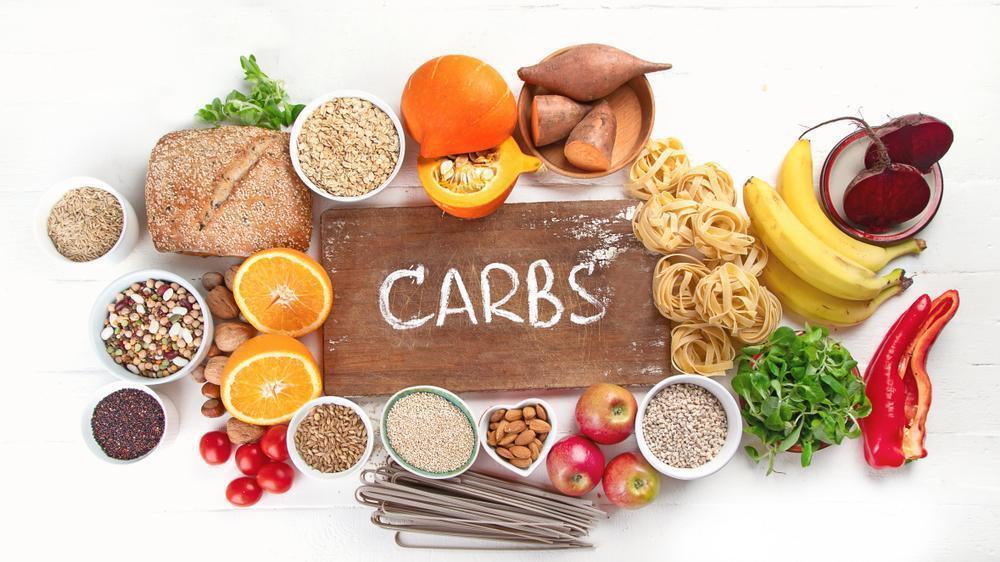
Dietary NeedsGut HealthDigestionPancreatitis
Do Dogs Need Carbohydrates?
Aug 31 2020
•
10 min read

Dietary NeedsGut HealthDigestionPancreatitis
7 Wonderful Herbs for Dogs
Jul 06 2020
•
9 min read

Dietary NeedsGut HealthDigestionPancreatitis
Does My Dog Have a Vitamin Deficiency?
May 04 2020
•
15 min read
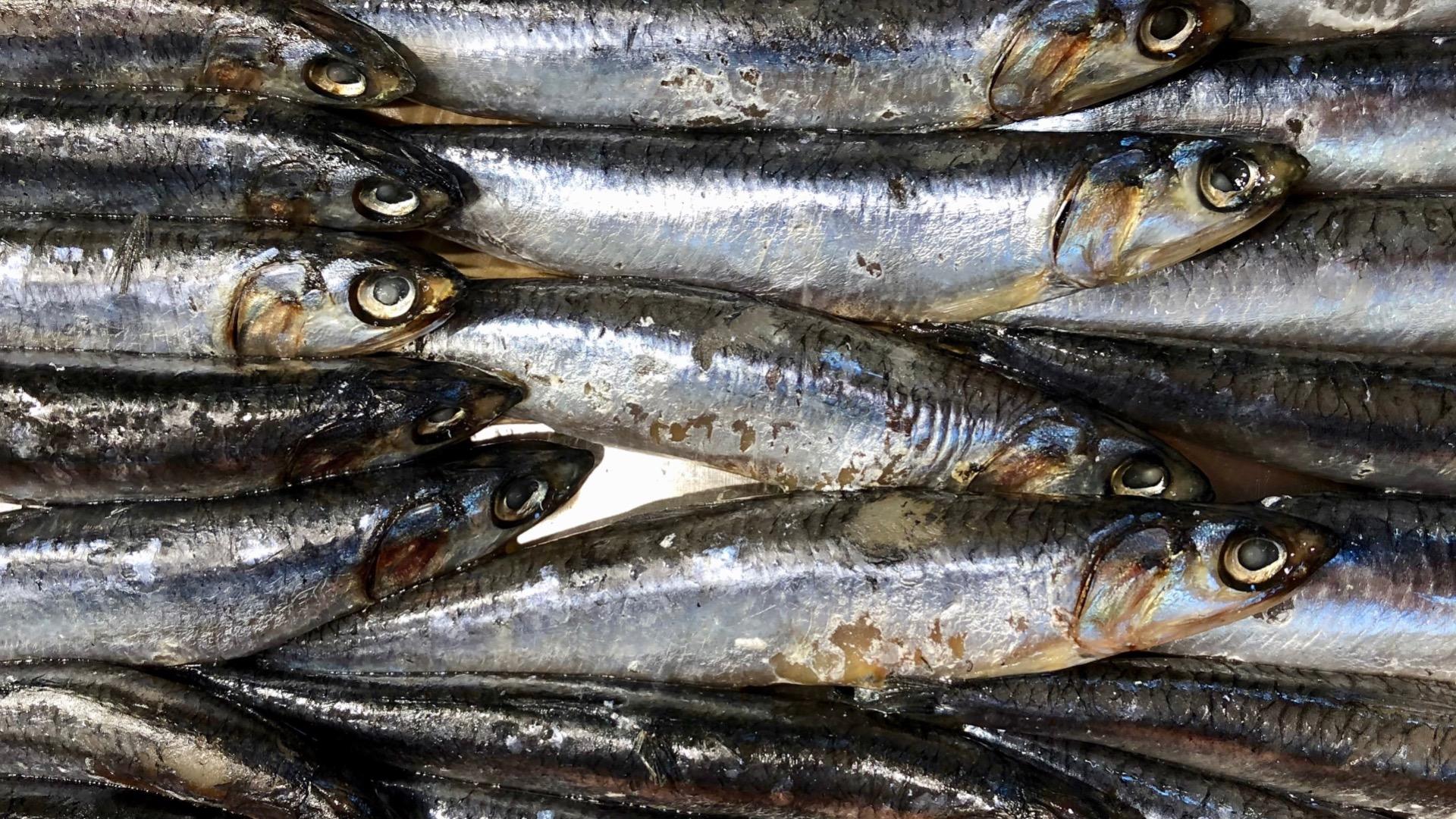
Dietary NeedsGut HealthDigestionPancreatitis
Essential Fats for my Dog’s Diet: The Ultimate Guide
Mar 24 2020
•
10 min read

Dietary NeedsGut HealthDigestionPancreatitis
Pancreatitis: Natural Guide for Pets
Mar 17 2020
•
9 min read

Dietary NeedsGut HealthDigestionPancreatitis
7 Top Reasons to use Clay in your Dog’s Diet Regime
Feb 20 2020
•
5 min read
✕




